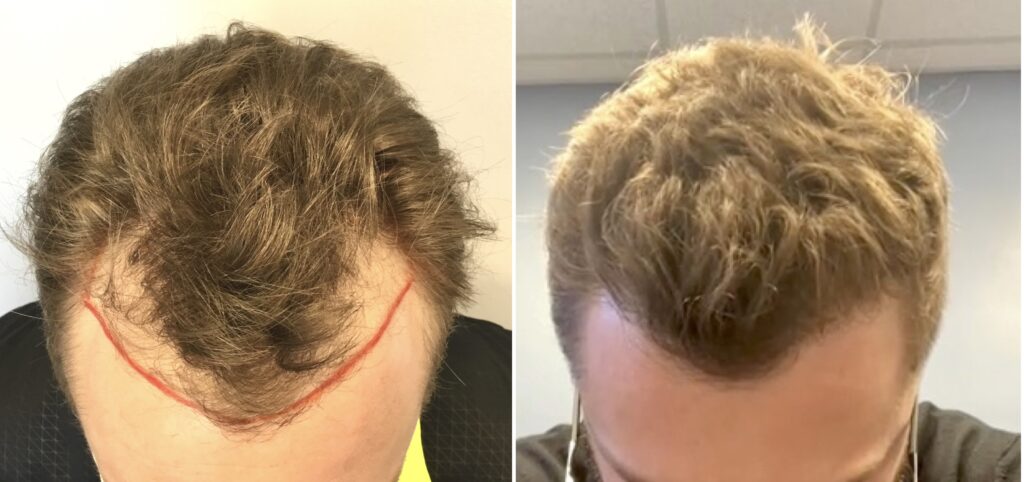How many times can I go for hair transplant surgery?

Hair loss is one of the most concerning issues nowadays among both genders. A hair transplant is one of the most effective solutions for any hair loss or balding issues. It can regenerate hair loss by any cause, age, genes, or any health issue. It gives permanent solutions in just one session but in some cases, individuals may need more than one session for full coverage. But most of the time people ask How many times can I go for hair transplant surgery? This depends on several various factors. Let’s discuss those factors, benefits, side effects, and how many are usually needed in this blog.
Is Multiple Hair Transplant Surgery Possible?
Though hair transplant is very effective in just one session, if someone suffers from major hair loss or complete baldness, they may need more than 1 session of hair transplant. Surgeons suggest multiple sessions over some time to cover the decided goal of hair density and coverage.
How many times can I go for hair transplant surgery?
Factors that determine the number of hair transplant in Islamabad you can have are:
1. Donor Area Supply
The greatest limiting factor on how many times you can have hair transplant surgery is the supply of donor hair most commonly from the back or sides of the scalp. This region of the scalp generally resists balding and yields the healthiest grafts.
When this region is exhausted, it is difficult or impossible to do further transplants. If you have a dense and full donor area, you can qualify for additional surgeries.
2. Degree of Hair Loss
People with extensive balding may require more treatments to achieve scalp coverage. Nevertheless, in case you’ve just seen thinning or hairline recession, a single or two sessions could be enough.
3. Nature of Technique Employed
There are two primary forms of hair transplant procedures: FUT (Follicular Unit Transplantation) and FUE (Follicular Unit Extraction).
- FUT permits a greater number of grafts per session but results in a linear scar.
- FUE is less invasive with less scarring, enabling multiple procedures without leaving marks.
Your technique of choice determines how frequently you can have surgery without damaging the donor area.
4. Scalp Elasticity and Health
Every procedure involves the scalp. After several operations, scar tissue can make skin harder to move. If your scalp gets too tight or destroyed, additional transplants may not be in your best interest.
5. Time to Heal and Recover
Interval procedures of 8 to 12 months provide complete healing, allow final evaluation of results, and ensure maximum graft survival for the following session.
When May You Require a Second (or Third) Hair Transplant
- Insufficient Density: Sometimes, the initial transplant doesn’t give the desired thickness.
- Progressive Hair Loss: If your hair loss continues after your first surgery, more sessions may be required to restore new bald areas.
- Reconstruction of Hairline or Crown: Some patients initially focus on one area and later opt to address others.
- Touch-up Work: Correcting an unnatural look or addressing uneven growth might call for a minor follow-up session.
Risks of Having Too Many Hair Transplants
Although multiple procedures are feasible, too many procedures carry risks:
- Over-harvesting the donor site, causing noticeable thinning
- Scarring that diminishes future grafting prospects
- Decreased graft survival with every additional procedure
- Higher recovery period and complications
How To Maximise Hair Transplant Results?
- Seek a specialist surgeon for a customized plan
- Wait for at least a year between procedures to assess growth
- Preventatively take drugs such as minoxidil or finasteride to prevent further loss of hair
- Carefully follow post-op treatment to ensure maximum healing and graft survival
Final Thoughts
There isn’t a rigid limit on the number of hair transplants you can get, but 2 to 3 well-thought-out sessions should suffice for most individuals to achieve their desired appearance. The secret is careful planning, professional implementation, and correct post-surgical care.
Before considering a second or third transplant, discuss your expectations, scalp health, and donor hair status with your surgeon. This ensures realistic goals and safe procedures that preserve your long-term appearance.
Ready for your hair restoration journey? Consult with our board-certified hair transplant specialist Dr. Shahnaz Mauzzam at Royal Cosmetic Clinic Islamabad so we can determine the best path forward based on your unique needs and long-term goals.
